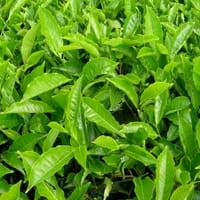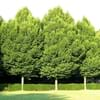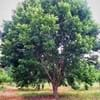Life Span
Perennial
Not Available
Origin
Europe, Turkey
China
Types
Not available
Camellia sinensis var. sinensis
Camellia sinensis var. assamica
Number of Varieties
Not Available
Habitat
hedge rows, Woodlands
Hillside, Mountain Slopes, Subtropical climates, Tropical regions
USDA Hardiness Zone
2-9
7-9
AHS Heat Zone
Not Available
8-5
Sunset Zone
Not Available
H1, 4, 5, 6, 7, 8, 9, 12, 14, 15, 16, 17, 18, 19, 20, 21, 22, 23, 24
Habit
Upright/Erect
Oval or Rounded
Flower Color
Yellow, Green, Orange Red
White, Yellow
Flower Color Modifier
Bicolor
Bicolor
Leaf Color in Spring
Light Green
Green, Dark Green
Leaf Color in Summer
Dark Green
Dark Green
Leaf Color in Fall
Lemon yellow, Yellow green, Orange Red
Dark Green
Leaf Color in Winter
Not Available
Dark Green
Plant Season
Summer, Fall, Winter
Fall, Winter
Sunlight
Full Sun, Partial Sun
Partial Sun
The pH of Soil
Acidic, Neutral
Acidic, Neutral
Soil Drainage
Average
Well drained
Bloom Time
Spring
Fall, Late Fall, Early Winter
Tolerances
Drought, Pollution, Variety of soil types
Not Available
Where to Plant?
Ground
Ground
How to Plant?
Grafting, Seedlings
Seedlings, Stem Planting
Plant Maintenance
Low
Medium
Watering Requirements
Average Water Needs, Do Not over Water, Keep the ground moist but not water-logged, Requires regular watering
Keep ground moist, Prefer drip-irrigation instead of Over-head watering, Requires a lot of watering, Water when soil is dry
In Summer
Lots of watering
Lots of watering
In Spring
Moderate
Moderate
In Winter
Average Water
Average Water
Soil pH
Acidic, Neutral
Acidic, Neutral
Soil Drainage Capacity
Average
Well drained
Sun Exposure
Full Sun, Partial Sun
Partial Sun
Pruning
Cut or pinch the stems, Remove damaged leaves, Remove dead branches, Remove dead leaves
Generally pruned to waist height, Remove damaged leaves, Remove dead leaves, Remove dead or diseased plant parts
Fertilizers
All-Purpose Liquid Fertilizer, Nitrogen, Water soluble fertilizers
All-Purpose Liquid Fertilizer
Pests and Diseases
Aphids, Caterpillars, Powdery mildew
Caterpillars, Moth, Red blotch
Plant Tolerance
Drought, Pollution, Variety of soil types
Not Available
Flowers
Insignificant
Showy
Flower Petal Number
Not Available
Single
Fragrant Leaf
Not Available
No
Foliage Texture
Medium
Medium
Foliage Sheen
Glossy
Glossy
Attracts
Birds, Not Available
Not Available
Allergy
Asthma, conjunctivitis, Pollen, Rhinitis
Not Available
Aesthetic Uses
Cottage Garden
Not Used For Aesthetic Purpose
Beauty Benefits
Skin irritation, Stops hair loss
Not Available
Environmental Uses
Air purification, Shelter for wildlife
Air purification
Medicinal Uses
Cold, Cough, Diarrhea, Hair Loss, Headache, hemorrhoids, Rheumatism, Sore throat
Diabetes, High cholestrol, Kidney Stones, Parkinson
Part of Plant Used
Leaves
Leaves
Other Uses
Cosmetics, Used as Ornamental plant, Used for its medicinal properties
Preferably used as black tea, Used for producing cooking oil, Used in making beverages
Used As Indoor Plant
No
No
Used As Outdoor Plant
Yes
Yes
Garden Design
Feature Plant, Shade Trees
Container, Edible, Feature Plant, Foundation, Hedges
Botanical Name
Carpinus betulus
CAMELLIA sinensis
Common Name
Common Hornbeam, European Hornbeam
Tea, Tea Camellia
In Hindi
हानबीन
चाय के पौधे
In German
Hainbuche
Teepflanze
In French
charme
usine de thé
In Spanish
carpe
planta del té
In Greek
γαύρος
φυτό του τσαγιού
In Portuguese
choupo-branco
planta do chá
In Polish
grab
Herbata roślin
In Latin
Item carpinus
Tea herba
Phylum
Magnoliophyta
Tracheophyta
Class
Magnoliopsida
Magnoliopsida
Family
Betulaceae
Theaceae
Clade
Angiosperms, Eudicots, Rosids
Angiosperms, Asterids, Eudicots
Tribe
Not Available
Not Available
Subfamily
Coryloideae
Not Available
Number of Species
Not Available
Properties of Hornbeam and Tea Plant
Wondering what are the properties of Hornbeam and Tea Plant? We provide you with everything About Hornbeam and Tea Plant. Hornbeam doesn't have thorns and Tea Plant doesn't have thorns. Also Hornbeam does not have fragrant flowers. Hornbeam has allergic reactions like Asthma, conjunctivitis, Pollen and Rhinitis and Tea Plant has allergic reactions like Asthma, conjunctivitis, Pollen and Rhinitis. Compare all the properties and characteristics of these two plants. Find out which of these plant can be used as indoor plant. If you are interested to decorate your house and garden, find out aesthetic uses, compare them and select the plant which will beautify your surrounding. Along with beautification, try comparing medicinal and edible uses of Hornbeam and Tea Plant and you can choose the plant having best and most benefits.
Season and Care of Hornbeam and Tea Plant
Season and care of Hornbeam and Tea Plant is important to know. While considering everything about Hornbeam and Tea Plant Care, growing season is an essential factor. Hornbeam season is Summer, Fall and Winter and Tea Plant season is Summer, Fall and Winter. The type of soil for Hornbeam is Loam and for Tea Plant is Loam while the PH of soil for Hornbeam is Acidic, Neutral and for Tea Plant is Acidic, Neutral.
Hornbeam and Tea Plant Physical Information
Hornbeam and Tea Plant physical information is very important for comparison. Hornbeam height is 610.00 cm and width 610.00 cm whereas Tea Plant height is 300.00 cm and width 300.00 cm. The color specification of Hornbeam and Tea Plant are as follows:
Hornbeam flower color: Yellow, Green and Orange Red
Hornbeam leaf color: Light Green
Tea Plant flower color: White and Yellow
- Tea Plant leaf color: Green and Dark Green
Care of Hornbeam and Tea Plant
Care of Hornbeam and Tea Plant include pruning, fertilizers, watering etc. Hornbeam pruning is done Cut or pinch the stems, Remove damaged leaves, Remove dead branches and Remove dead leaves and Tea Plant pruning is done Generally pruned to waist height, Remove damaged leaves, Remove dead leaves and Remove dead or diseased plant parts. In summer Hornbeam needs Lots of watering and in winter, it needs Average Water. Whereas, in summer Tea Plant needs Lots of watering and in winter, it needs Average Water.





